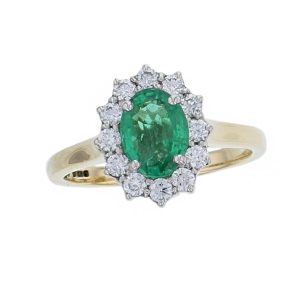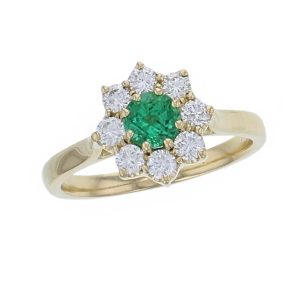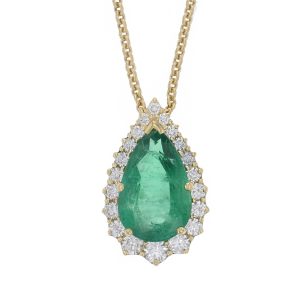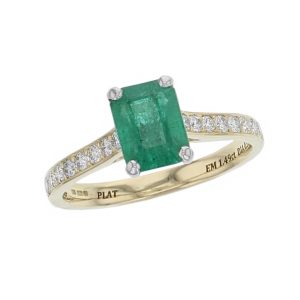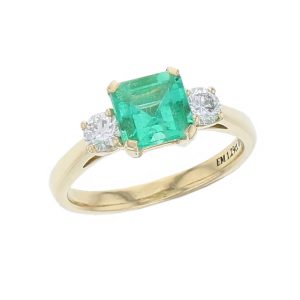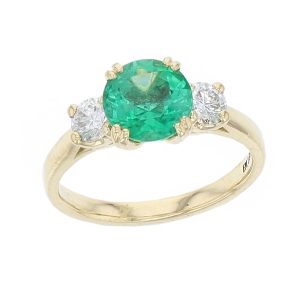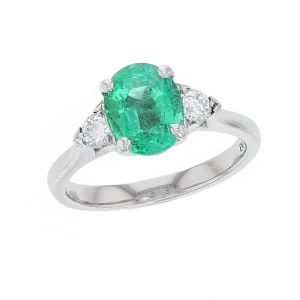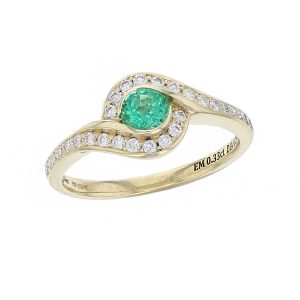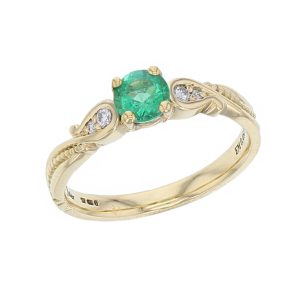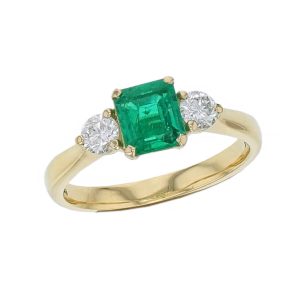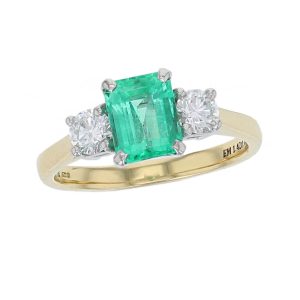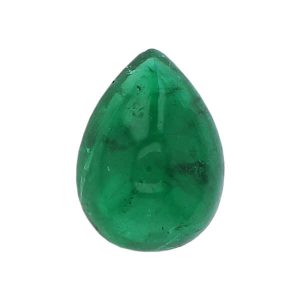-
Spiritual Benefits
Called the “Stone of Successful Love,” Emerald opens and nurtures the heart and the Heart Chakra. Its soothing energy provides healing to all levels of the being, bringing freshness and vitality to the spirit. A stone of inspiration and infinite patience, it embodies unity, compassion and unconditional love. Emerald promotes friendship, the balance between partners, and is particularly known for providing domestic bliss, contentment and loyalty. It was dedicated in the ancient world to the goddess Venus for its ability to ensure security in love.
Emerald is also a stone of great vision and intuition, associated with the eyes and sight, long believed to foretell future events and reveal one’s truths. It is a stone of wisdom, enhancing memory and increasing mental clarity. It combines intelligence with discernment and brings to the conscious mind what is unconsciously known. Emerald also increases focus and intent, activating psychic abilities and opening clairvoyance. Traditionally it was used as a protection against enchantment and spells.
Emerald has been a source of fascination and reverence in many cultures for over six thousand years, sold in the markets of Babylon as early as 4,000 B.C. It was a stone worshipped by the Incas, believed by the Chaldeans to contain a goddess, and was highly honoured in all major religions for its spiritual power and beauty. Emerald was considered a symbol of eternal life in ancient Egypt, a gift of Thoth, the god of wisdom, and was a favourite jewel of Queen Cleopatra. The Emerald mines in Upper Egypt rediscovered a hundred years ago, are some of the oldest in the world and were called Cleopatra’s mines for her love of the stone. Emeralds were also talismans of Aristotle, Alexander the Great, Charlemagne, and the moguls of India. They’ve adorned the crowns and royal jewels of many countries for centuries, and fabulous collections and stunning gems continue to be treasured and displayed by the rich and famous today.
-
Characteristics
COLOUR
Colour is the most important factor in establishing the emerald’s value. If the hue is too yellowish or too bluish, the stone is not emerald, but a different variety of beryl and its value drops accordingly. The most desirable emerald colours are bluish green to pure green, with vivid colour saturation and tone that’s not too dark and is evenly distributed, with no eye-visible colour zoning.
CLARITY
Clarity is important, but inclusions are tolerated more in emerald than virtually any other gemstone. Unlike other beryl gems, emeralds often contain inclusions and other flaws. While eye-visible inclusions in higher-quality emeralds are generally accepted, when the inclusions have a negative effect on transparency and clarity, they also dramatically reduce value. Highly transparent emeralds that have no eye-visible inclusions are very rare and are highly valued.
CUT
Due to the importance of colour, the cut must maximize the effect of hue, tone, and saturation. The cutter can affect colour by adjusting an emerald’s proportions and the number of facets. The cutter can darken a pale stone with a deep cut, a small table, and fewer facets, or lighten a dark stone with a shallow cut, a large table, and additional facets.
The level of fractures in emeralds make them are more brittle than a gem like corundum and are more vulnerable to damage by impact, pressure, or temperature change. A cutter will try to design the cut to minimize the effect of those fractures during cutting, polishing, and setting the finished stone.SHAPE
The most common cut, the emerald cut is a rectangular or square shape step cut with cut off corners. Emeralds are also cut into a variety of other traditional shapes such as pear, oval and round. Highly transparent emeralds are sometimes given brilliant cuts. Lower grade emeralds are often cut as cabochons or beads.
TREATMENT
The term ‘oiling’ refers to the practice of immersing emeralds in a colourless oil or resin (most often cedar oil) in order to enhance colour, clarity and stability. This is also often done using a vacuum chamber to assist penetration. Non-standard treatments go beyond this by using coloured oils and epoxy-like resins.
These treatments dramatically improve the appearance of emeralds when used but necessitate special care in cleaning and setting. Steam cleaners, solvents and ultrasonic cleaners can remove the oils, making inclusions that were barely visible stand out in sharp relief. Since emeralds can be restored through re-oiling, the damage is considered to be only temporary.
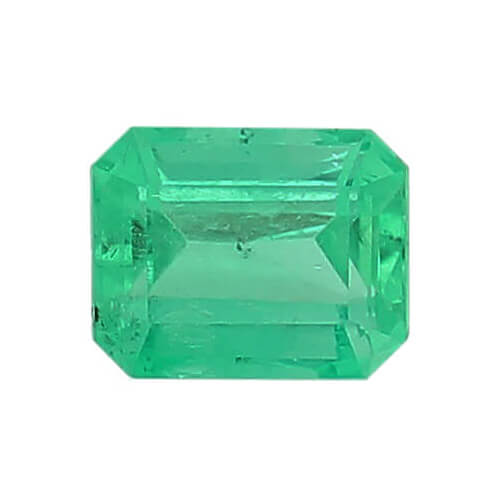
Emerald
Emerald is the birthstone for May, the gem for the zodiac sign Taurus. It is also the 2oth, the 35th and 55th wedding anniversary gemstone.
Emerald is a green variety of beryl, a mineral species that includes aquamarine,morganite and yellow beryl. It’s Mohs Hardness is 7.5 to 8. It’s density is lower than that of diamond, a one-carat emerald will appear larger in size than a one-carat diamond.
From pharaohs to Inca kings, emeralds have enchanted royalty. Cleopatra for example reputedly had a passion for these gems. The legendary Crown of the Andes is one example of how the Spanish revered emeralds, while the story of the Spanish galleon, the Nuestra Señora de Atocha, shows to what the lengths generations of treasure hunters went to discover its sunken loot.


